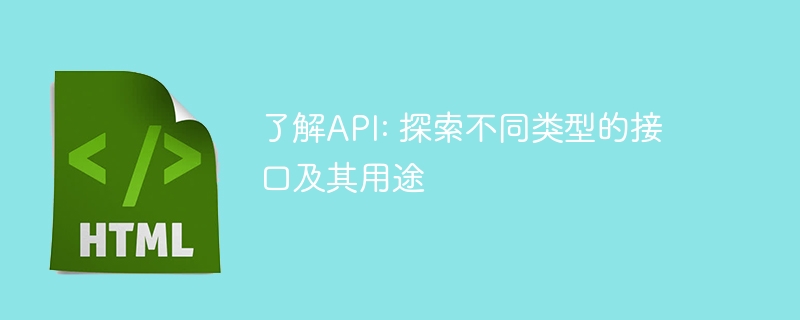

Understanding the API: Exploring the different types of interfaces and their uses requires specific code examples
Introduction:
In today’s digital age, we often hear and API (Application Programming Interface) related vocabulary. API is an integral part of modern software development, providing various ways for different software systems to communicate and interact with each other. This article will introduce readers to different types of APIs and provide specific code examples to deepen their understanding of APIs.
1. What is API?
API refers to a set of methods and protocols that specify how different software components interact. It can be understood as a bridge between two software systems, allowing them to share data and functions. APIs are usually provided in the form of some programming language, and the functions and functions of the external system can be accessed and manipulated using these methods. In the software development process, APIs can be regarded as building blocks, and developers can simplify code writing and system integration by calling the functions of the API.
2. Different types of APIs and their uses
import requests url = "https://api.example.com/data" response = requests.get(url) data = response.json() print(data)
import numpy as np array = np.array([1, 2, 3, 4, 5]) mean = np.mean(array) print(mean)
import os file_path = "data.txt" if os.path.exists(file_path): with open(file_path, "r") as file: contents = file.read() print(contents) else: print("File does not exist")
import sqlite3 conn = sqlite3.connect("example.db") cursor = conn.cursor() cursor.execute("CREATE TABLE IF NOT EXISTS students (name TEXT, age INTEGER)") cursor.execute("INSERT INTO students VALUES ('Alice', 20)") cursor.execute("INSERT INTO students VALUES ('Bob', 22)") conn.commit() cursor.execute("SELECT * FROM students") rows = cursor.fetchall() for row in rows: print(row) conn.close()
3. Summary
APIs are an integral part of modern software development. They provide communication for different software systems. and interaction methods. This article introduces several common API types, including Web API, Library API, operating system API, and database API, and provides specific code examples to demonstrate their use. By in-depth understanding and learning of APIs, developers can better utilize these interfaces to simplify the development process, enhance application functions, and improve system integration capabilities.
The above is the detailed content of Understanding the API: Explore the different types of interfaces and their uses. For more information, please follow other related articles on the PHP Chinese website!




